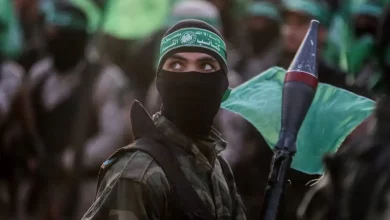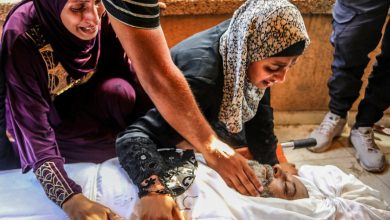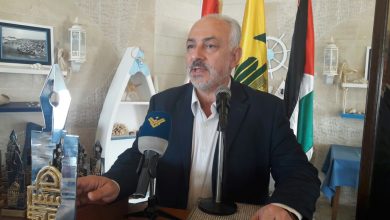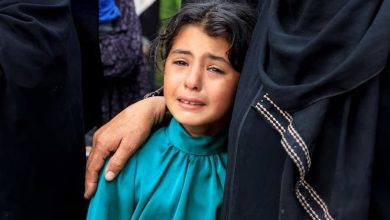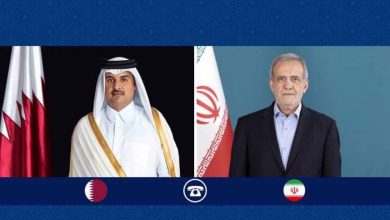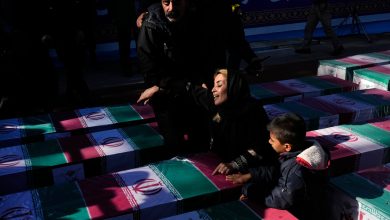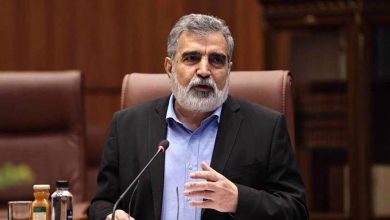Hezbollah declares full readiness to confront any Israeli aggression and ambitions
Lebanon's Hezbollah resistance movement has asserted its full preparedness to respond to any potential Israeli aggression, emphasizing the influence of its successful operations that contributed to the recent ceasefire agreement with Israel. The group highlighted its significant role in shaping the terms of the truce, which it claims was secured through its numerous victorious campaigns.
In a statement issued on Wednesday, the organization announced that it has established over 300 defensive positions south of the Litani River. The group emphasized that its fighters, now stationed at each location, are at peak readiness, with enhanced combat strength, equipment, and capabilities.
The Islamic Resistance Operations Room has announced that its fighters, skilled in various military disciplines, will maintain a state of full readiness to counter any ambitions or attacks from Israeli forces.
The group emphasized its commitment to monitoring the maneuvers and retreats of enemy forces across borders while maintaining readiness to defend Lebanon’s sovereignty and uphold the dignity and honor of its citizens.
Hezbollah has vowed to intensify its commitment to the resistance movement, asserting its continued support for the oppressed and the vulnerable, particularly in Palestine, with a focus on the holy city of al-Quds as its capital. The organization emphasized that this city will endure as a symbol and a pathway for future generations aspiring to achieve freedom and liberation.
The movement highlighted its series of successful reprisals against Israeli targets, emphasizing its sustained operations over a period exceeding 13 months. These actions were in solidarity with Palestinians in the Gaza Strip, who the movement claims are enduring a genocidal campaign, and in defense of the Lebanese populace.
The organization announced that it executed the operations under the directives of its former secretary general, Sayyed Hassan Nasrallah, who was killed in September during heavy Israeli airstrikes on Beirut, the capital of Lebanon. The group revered him as the “supreme martyr.”
The group stated that the operations were conducted in accordance with the guidance of Sheikh Naim Qassem, who is regarded as the rightful successor to Nasrallah.
**Hezbollah Declares Victory Over Presumed Hostile Forces**
The movement declared that the strikes had allowed them to secure a victory against what they described as a “delusional enemy,” asserting that this adversary failed in its attempts to weaken their determination or break their spirit.
Hezbollah has claimed that its fighters successfully thwarted enemy objectives and overcame opposing forces in their retaliatory efforts. According to the group, these actions were marked by significant resilience and determination during the Tufan al-Aqsa and Ula al-Bas battles, with the commitment of their members symbolically underscored by their “blood.”
Tufan al-Aqsa, also known as al-Aqsa Storm or al-Aqsa Flood, signifies the steadfast response of regional resistance movements in defense of Palestinians affected by ongoing conflict, as well as the territories held by these factions, amidst intense Israeli military actions.
The Uli al-Bas battle saw a total of 105 military operations and prominently included a highly effective ambush executed by Hezbollah against Israeli forces in southern Lebanon. During this engagement, upwards of 18 Israeli troops were reported killed, with 32 others sustaining injuries. Additionally, five of Israel’s advanced Merkava tanks were destroyed.
The recent wave of strikes included the group’s Khaybar series of operations, which marked a significant escalation by targeting numerous strategic and sensitive military and security installations for the first time. The offensive employed advanced ballistic and precision-guided missiles, along with sophisticated kamikaze drones, highlighting a notable development in the group’s operational capabilities.
The statement indicated that the projectiles and aircraft penetrated as far as Tel Aviv, extending 150 kilometers (93 miles) into the occupied territories.
Over 130 Israeli forces have been reported killed during more than 4,635 military operations, sources indicate.
The movement has reported executing a total of 4,637 operations, averaging 11 strikes per day. These operations have targeted a broad range of strategic and sensitive locations, including military barracks, bases, urban areas, and settlements. The strikes originated from Lebanese territory, extending their reach across the border to the occupied Palestinian territories and beyond, impacting areas as far as Tel Aviv.
The death toll in Israel has surged to over 130, with an additional 1,250 individuals injured, following the latest retaliatory strikes.
Hezbollah has claimed responsibility for the destruction of 59 Merkava tanks, 11 military bulldozers, two Hummer vehicles, two armored vehicles, and two personnel carriers. Additionally, the group asserts it successfully downed six Hermes 450 drones, two Hermes 900 drones, and a quadcopter.
It is important to highlight that this count excludes the casualties and damages sustained by Israeli forces in military bases, installations, barracks, settlements, and cities under occupation.
The organization successfully repelled enemy incursions into southern Lebanon, thwarting endeavors to create a so-called “military and security buffer zone” in the region.
“The adversary was unsuccessful in preventing the launch of missiles and drones targeting the occupied interior. Up until the final day of the hostilities, our forces persistently attacked deep within the enemy’s territory from border towns.”
In a setback to its original objectives, the regime initiated what is termed as a “second phase” of its ground operation. However, sources indicate that this move amounted largely to a politically and media-driven declaration, as forces failed to make headway toward towns along the second front line. The regime reportedly sustained significant casualties in the city of Khiam, necessitating three withdrawals, and faced further losses in Ainatha, Taloussa, Bint Jbeil, and Qawzah.
The Israeli military’s efforts to advance on the towns of al-Bayyda and Shamaa were described by Hezbollah as having dramatically failed, resulting in significant losses for Israeli forces. According to Hezbollah, the towns became “a graveyard for tanks and elite soldiers,” forcing a strategic withdrawal by Israeli troops in the face of resistance from Hezbollah fighters.
The movement has pointed to recent events in the two towns as proof of its fighters’ preparedness to repel any potential future aggression by the regime.
Hezbollah extended congratulations to the Lebanese populace, commending their “legendary steadfastness and sacrifices” which, according to the group, have effectively dispelled the “illusions” of their adversaries.
The triumph celebrated by the Lebanese populace and resistance was evidenced by the return of displaced citizens to their homes in the southern region, marked by expressions of pride and renewed spirit.
“You traverse the globe triumphantly, bearing the resilient and steadfast banner both in action and spirit, serving as a steadfast symbol of resistance against oppression and aggression.”

